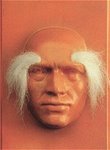
Welcome back class, we hope you had a good weekend. Hopefully, you are now ready to knuckle down and continue with our deconstruction of Omaha Hi/Lo. If not, please feel free to pop to the tuck shop and order yourself a pastrami on rye, or do something that rocks your boat. We want you happy. We will not be home to Captain Sourpuss. When you return, we’ll still be here, immersed in probabilities and chewing the flop. In fact, while you are gone, we will again chalk up the three fundamental rules. They may help blow away some of the Monday cobwebs.
Remember, in Omaha Hi/Lo, a house of rising profits is built on the following foundations:
1. You must have stricter starting requirements than your opponents.
2. You must remember that the nut low hand will regularly tie.
3. If you decide to play for a drawing hand, it must be the nuts.
Today, we will cover Rule Three. In some ways, it is the most important point because if you frequently ignore it, you will definitely go broke.
In a game of Omaha Hi/Lo, it is not uncommon for five or six players to see the flop. In such a hand, if you decide to remain in the pot and you have a drawing hand, you have to make the nuts. Nothing else will do, because pots are frequently halved and the margin for error is smaller: playing for second best is a losing proposition.
Here is an example:
You are playing the big blind position and you are holding Kc-8c-Td-7h.
Five other players see a flop of: 2c-5c-Th.
You are first to act and it is an unraised pot. It can be very tempting to check and call, particularly because it is easy to believe that you might see the ace of clubs, thus making the nut flush. But listen up for sec. Put down that sandwich and wipe your mouth: A lot of the time, the ace will be out there.
Even in soft games of Omaha Hi/Lo, the players will understand the power of the ace. If a lot of your opponents see the flop, the stronger the likelihood that the aces are out of the deck. It is time for you to check and fold. Playing for the king high flush is just not profitable. Bad decisions like that occur all of the time at Omaha Hi/Lo and the simplest way of boosting your profits is to make fewer of them than your opponents.
To underline that point, let’s change your hole cards to Ac-8c-Td-7h. The flop stays the same.
This time, you should definitely check and call (in more advanced scenarios, you could consider a check-raise but that could cost you a lot of money, if you didn’t have a read on your opponents). If you develop your hand into the nut flush, there is a fair chance that you will be against someone who has not benefited from the wisdom of Sun Tzu and will pay you off. Moreover, if the third low card fails to land, you could scoop the whole pot.
At this point, I would like to remind you of Rule Two and our previous discussion: You must remember that the nut low hand will regularly tie.
In last week’s entry, we advised that it is essential that you are capable of putting down the nut low. For the exact same reason, there are times when it is not worth drawing to the nut low hand. The more players in the hand: the more likely that the low will be tied and it will be more expensive to make the draw.
To amend the example a final time: the hole cards are now As-3c-Kc-Th, but all of the other conditions are the same. It now becomes a hand that could easily cost your stack. For a lot of players, it will.
It is a home-wrecker because it has:
a) the second-best flush draw.
b) a draw to the nut low (although a three would cause problems).
c) plenty of opponents.
d) a big pot.
It is a very difficult fold, one that most of your opponents will not be capable of making. Most of the time, you have to fold. If you hit, you will likely make the second best high hand and quarter the low pot. They are terrible odds.
We hope you know understand why drawing to second best hands is not a great way to defeat the credit crunch. Hopefully, you are now well on your way to crushing the Omaha Hi/Lo games.
On Wednesday, we will post one final Omaha Hi/Low tutorial, which will cover some advanced moves and plays that were beyond the scope of the fundamental rules.
Well, that is the bell sounding and today’s lesson is over. Take care out there class and don’t let me catch you playing second-fiddle.


No comments:
Post a Comment